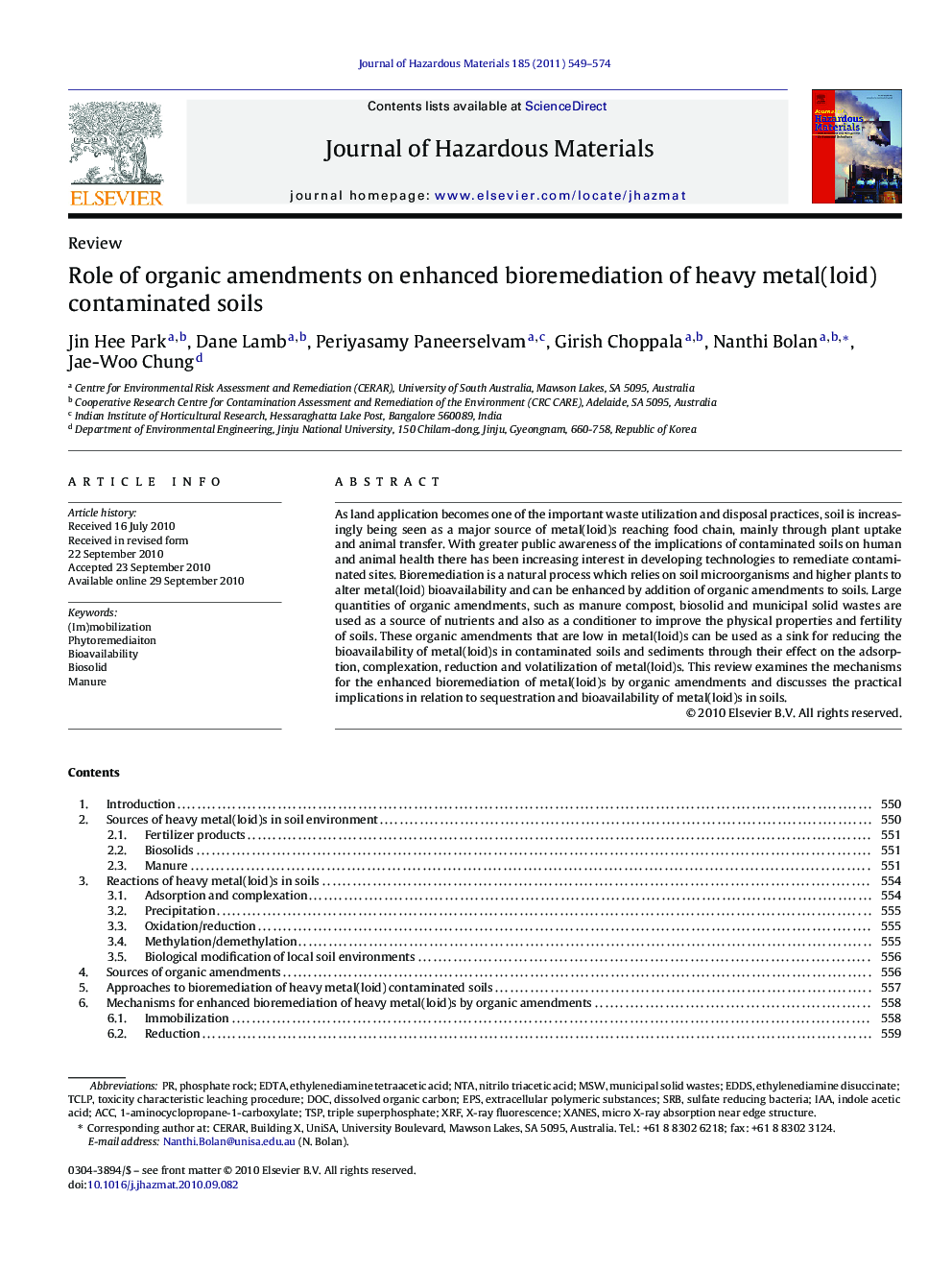| Article ID | Journal | Published Year | Pages | File Type |
|---|---|---|---|---|
| 579827 | Journal of Hazardous Materials | 2011 | 26 Pages |
Abstract
As land application becomes one of the important waste utilization and disposal practices, soil is increasingly being seen as a major source of metal(loid)s reaching food chain, mainly through plant uptake and animal transfer. With greater public awareness of the implications of contaminated soils on human and animal health there has been increasing interest in developing technologies to remediate contaminated sites. Bioremediation is a natural process which relies on soil microorganisms and higher plants to alter metal(loid) bioavailability and can be enhanced by addition of organic amendments to soils. Large quantities of organic amendments, such as manure compost, biosolid and municipal solid wastes are used as a source of nutrients and also as a conditioner to improve the physical properties and fertility of soils. These organic amendments that are low in metal(loid)s can be used as a sink for reducing the bioavailability of metal(loid)s in contaminated soils and sediments through their effect on the adsorption, complexation, reduction and volatilization of metal(loid)s. This review examines the mechanisms for the enhanced bioremediation of metal(loid)s by organic amendments and discusses the practical implications in relation to sequestration and bioavailability of metal(loid)s in soils.
Keywords
ACCTCLPXANESDOCMSWEDDSEPSSRBIAATSPNTA1-aminocyclopropane-1-carboxylateEDTAethylenediamine tetraacetic acidindole acetic acidNitrilo triacetic acidBiosolidToxicity characteristic leaching procedurephosphate rockTriple superphosphateSulfate reducing bacteriaXRFBioavailabilityX-ray fluorescenceMunicipal solid wastesExtracellular polymeric substancesDissolved organic carbonManure
Related Topics
Physical Sciences and Engineering
Chemical Engineering
Chemical Health and Safety
Authors
Jin Hee Park, Dane Lamb, Periyasamy Paneerselvam, Girish Choppala, Nanthi Bolan, Jae-Woo Chung,
